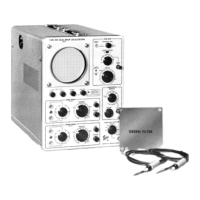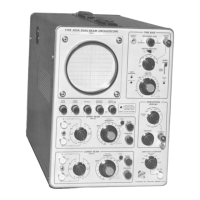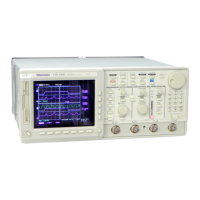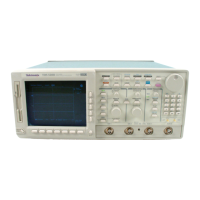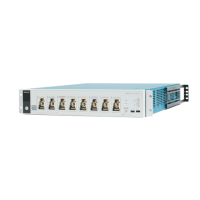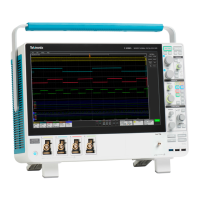Maintenance— Type 503
If there is excessive ripple on only one of the supplies,
check for open or leaky capacitors in that circuit.
CRT Circuit
Trouble other than power supply trouble which affects
the CRT Circuit will generally be caused by defects in the
intensity and focus voltage dividers, defects in the divider
associated with pins 7 and 11 of the CRT, by the astigma
tism control, or by the CRT itself. These parts (except for
the CRT) can be checked by voltage and resistance measure
ments. If the circuits check out satisfactorily replace the CRT.
Vertical Amplifier
No Spot or Trace. As mentioned earlier in the trouble
shooting procedure, if a spot is visible when the vertical
plates are externally shorted together, but disappears when
the short is removed, the Vertical Amplifier is in a state of
DC unbalance. To locate the defective stage, first set both
INPUT switches to the GND position and the SENSITIVITY
switch to the .2 VOLTS/CM position. Then, with an insulated
shorting strap, short between the points shown in Fig. 4-7,
starting at the right and progressing toward the left. As
the points are shorted in turn, the spot should appear on
the screen as each connection is made. Readjustment of the
POSITION control may be necessary when shorting between
plates of the input stage. With the input stage grounded,
the DC BAL. control may have to be readjusted.
When a point is reached where the spot does not return
to the screen, the stage immediately following this point
is at fault. The trouble may be caused by a defective tube,
transistor, resistor, capacitor, or broken lead.
Insufficient or No Vertical Deflection. Insufficient verti
cal deflection indicates a change in the gain characteristics
of the Vertical Amplifier. If the change in gain is small,
the Vertical Amplifier can usually be calibrated for gain.
In this event, refer to the Calibration section of this manual.
If the change in gain is more pronounced, or if there is
not vertical deflection at all, the tubes and transistors should
first be checked. Then check for components which can
affect the gain of the circuit but not the DC balance. Such
parts are common cathode resistors in the Input and Output
Amplifier stages, or plate dropping resistors which are com
mon to both sides of the amplifier.
Insufficient vertical deflection will also occur if the fre
quency limits of the Amplifier are exceeded.
%
Waveform Distortion. Waveform distortion can be
divided into two categories—low frequency and high fre
quency. If a square wave is applied to an input of the oscil
loscope, the type of distortion can be determined by the
shape of the displayed waveform. High frequency distor
tion will primarily affect the leading edge and trailing edge
of the applied square wave while low frequency distortion
will primarily affect the mid portion of the waveform.
Waveforms showing low frequency distortion and two
types of high frequency distortion are shown in Fig. 4-8.
The shapes of these waveforms will vary widely, however,
with the cause of the distortion and the frequency of the
applied waveform. A nominal amount of low frequency dis
tortion is normal for very low input frequencies when AC
coupling is used, and a nominal amount of high frequency
distortion is normal at the upper frequency limits of the
instrument. It is only when this distortion is excessive in the
normal frequency range of the nstrument that it consti
tutes a trouble.
Low frequency distortion is usually caused by a change
in the time constant of the input coupling circuit. If tubes
become gassy, however, their resultant grid current will
establish a time constant network which will affect the low
frequency response of the circuit.
Factors which can affect the high frequency response of
the vertical amplifier are mainly related to the high fre
quency compensation networks. An overshoot waveform
can be caused by excessive high-frequency peaking or by
a tube condition known as cathode interface. If this type
of distortion is detected, check the tubes in the amplifier.
If tube replacement does not completely correct the trouble.
Fig. 4-8. Frequency distortion. (A) Low-frequency distortion of an AC-coupled 100-Hz square wave due to attenuation ‘ c -fequericy
components of the waveform. (B) High-frequency distortion of a 1000-Hz square wave due to excessive boost of the , com
ponents of the waveform. (C) High-frequency distortion of a 1000-Hz wave due to attenuation of the high-frequency com ponent of the
waveform.
4-7
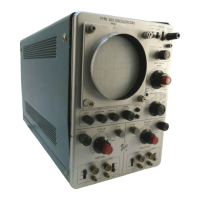
